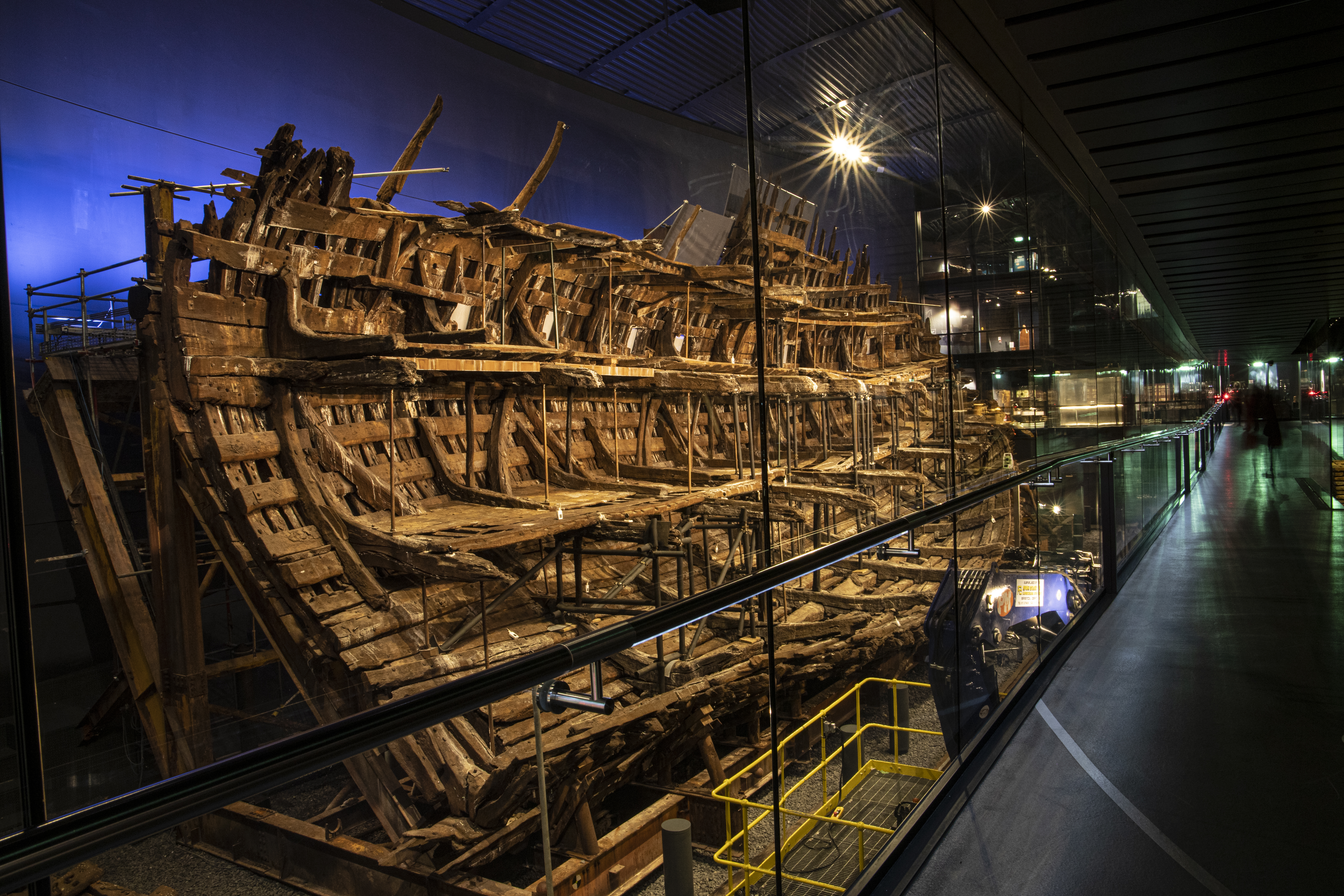In medieval England, “handedness” determined whether one was considered virtuous or evil. The Latin root of “left” literally meant “sinister,” and folks who favored that hand were sometimes accused of witchcraft.
Now, imaging technology can tell us how favoring one hand affected bone chemistry, according to a report in PLOS ONE. Researchers used relatively new imaging techniques to analyze the bones of centuries-old skeletons from a famous shipwreck, the Mary Rose. That ship, part of the Tudor navy during Henry VIII’s reign, was sunk by French ships July 19, 1545, during the Battle of the Solent. The crew’s skeletal remains were well preserved, allowing for extensive research into their health and appearance.
Human Remains from Medieval England
To examine the effects on aging — while also accounting for “handedness” — the researchers turned to the collarbone. Scanning both sides of 12 crew members’ clavicles whose ages ranged from 13 to 40 revealed asymmetric effects of aging. In all 12 instances, mineral content increased with age, while protein content decreased. The effects were also more pronounced on the right side.
“While the aim was also to investigate changes to clavicle bone chemistry with aging, handedness was incorporated as these human skeletal remains are from individuals who lived in medieval England, where left handedness had negative associations and right handedness was therefore the norm for everyone,” says Sheona Shankland, an author of the paper who did research while at Lancaster University.
Read More: A Hidden Graveyard of 18th Century Ships Makes Hawaii’s Shipwreck Beach
A New Way to Examine Bones
Although the researchers expected to see an increase in bone minerals tied to aging, examining the clavicles with Raman spectroscopy — a technique that employs lasers to probe a substance’s underlying chemistry — provided a new level of detail that other imaging techniques can’t deliver.
“The whole chemical picture provides more information than X-ray-based techniques that don’t consider the fluctuations in the chemical minutiae,” says Shankland.
Co-author Jemma Kerns, a Lancaster University researcher who worked on this project, has previously used Raman spectroscopy to investigate bone disease in the lower leg bones of some of these sailors. The technique is often used for quality control — for instance ensuring the chemical contents of a medicine contain the intended molecules. But it is relatively new to archeology.
“Use of the technique to examine aging alongside handedness is an entirely new avenue using archaeological human skeletal remains and it’s provided some really interesting results,” says Shankland.
Read More: No One Knows How Many Shipwrecks Exist, So How Do We Find Them?
The Health of 16th Century Sailors
For archeology, one of Raman’s biggest advantages is that it doesn’t destroy the objects it probes. The researchers emphasize that the ship’s skeletal remains were treated with deference.
As for the crew, part of their legacy is that learning about their past bone health could help better understand diseases like osteoporosis in the future.
“It has been a privilege to work with these unique and precious human remains to learn more about life for sailors in the 16th century while finding out more about changes to bone composition as we age, which is relevant to today’s health, has been fascinating,” Kerns said in a press release.
Read More: 4 Famous Shipwrecks That You Can Visit
Article Sources
Our writers at Discovermagazine.com use peer-reviewed studies and high-quality sources for our articles, and our editors review for scientific accuracy and editorial standards. Review the sources used below for this article:
Before joining Discover Magazine, Paul spent over 20 years as a science journalist, specializing in U.S. life science policy and global scientific career issues. He began his career in newspapers, but switched to scientific magazines. His work has appeared in publications including Science News, Science, Nature, and Scientific American.














